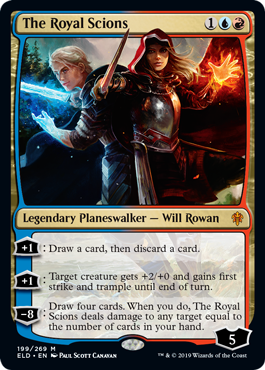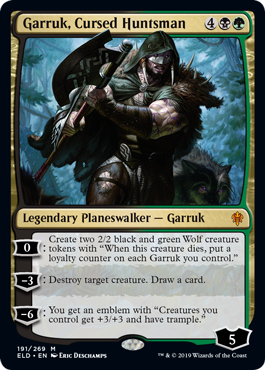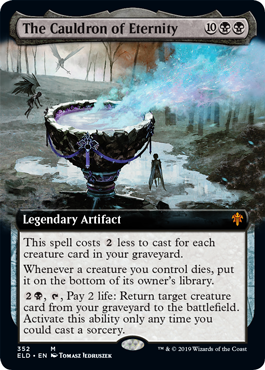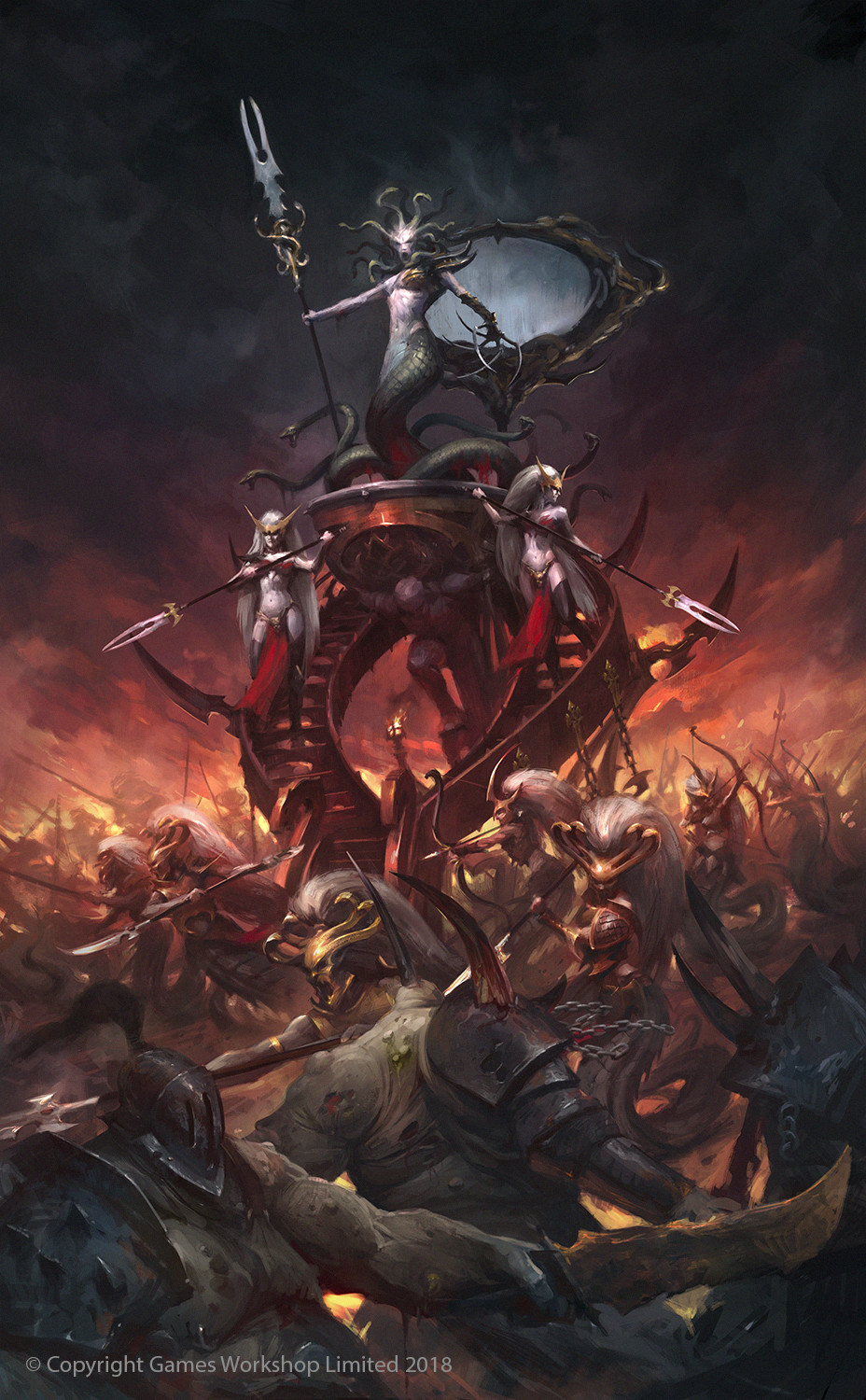Seriously, if you want to read The Wildered Quest without having anything spoiled, go buy it and read it first. It's only like, R75 for the e-book. I'll wait here.
Ok, so,
what the hell was up with the magical cauldron that mysteriously
appeared to save Will and Garruk from downing, cured Garruk of his
curse, and then vanished without a trace?
Eldraine
is in great part based on the legends of Camelot, and the cauldron is
Eldraine's version of the Holy Grail. The writer could have set it up
better, cause it seemed to mostly come out of nowhere, aside from a
couple of previous offhand mentions of it having gone missing and
that knight sometimes quest to find it. They could have made it a
chalice instead of a cauldron, so the connection was a bit more
obvious. So why did they turn the grail, which is usually some form
of a goblet or chalice, into a cauldron, and why is it black rather than white? There is a good reason for
it, and it lies in the origins of the grail stories.
The
French writer Chrétien de Troyes (often considered the first
novelist) seemingly invented the Holy Grail, and the knightly quest
to find it, for his romance Perceval ou le Conte du Graal. But
while he was the first to use that name, he actually seems to have
drawn on old Celtic legends about the inhuman Tuatha de Danann
– who are basically high-fantasy style elves. The king of the
Tuatha owned a magical cauldron that could restore the dead to life (which could be considered a form of necromancy, which is within the black part of the colour pie - though which can do it too). When Christianity came to England, many old stories and traditions
were altered to fit within the new anti-pagan rules imposed by the
emerging Christian clergy. Thus, the ancient inhuman king with
powerful warriors became the Christian King Arthur and his noble
knights, the magical cauldron became a chalice powered by the blood
of Jesus, and the ancient wizard Merlin became...ok, for some reason
Merlin survived mostly intact.

So, the
cauldron is the grail. Attention is not drawn to it in the novel, but
it is Will's selfless act to try and save Garruk from drowning that
causes the Grail to appear to him. (Proving him to have a 'pure
heart' or whatever you want to call it. ) If it hadn't appeared, he
and Garruk would most likely have drowned. But whyis it necessary to
invoke such a powerful artifact to cure Garruk? Why has nothing been
able to fix him until now?
Garruk's
curse stems from a story called The Hunter and the Veil that
came out when I first started playing Magic. In the story Garruk
realises that the necromancer Liliana Vess is trying to obtain an
artifact called the Chain Veil, a powerful magical artifact from the
plane of Shandalar. The Veil houses the souls of an entire race of
incredibly evil ogre wizards called the Onnake, who were thankfully
destroyed many years ago. They have never told us what sort of stuff
the Onnake did that makes them so incredibly evil, but the story
assures us that, yes, they are indeed incredibly evil, and it's a
good thing they are all dead, otherwise they would be doing
incredibly evil things of an unspecified nature.


Garruk
intercepts Liliana on what he thinks is her way to the Onakke
Catacombs where the veil is hidden, but unfortunately, it turns out
that she is actually leaving the catacombs, having already obtained
it. Garruk is more powerful than her, and almost defeats her, until
she desperately draws on the Veil's power to unleash a corruptive
curse on him. She escapes as the curse begins to drive Garruk slowly
insane, whilst black mana spreads slowly and painfully through his
veins.
Later it
was revealed that this is not the first time the Veil's curse has
been used on a planeswalker – Ob Nixilis was originally a human who
tried to use the power of the Veil but was instead cursed by it. As
Nixilis proceeded to then turn into a demon, it has been assumed that
Garruk's curse is also slowly transforming him into one.




So far
the curse has been treated as pretty much unstoppable. We don't know
much about it aside from it's effects on Nixilis and Garruk. Nahiri's
lithomancy was able to suppress it in Nixilis (leading Jace to embed
a hedron in Garruk to similar effect), but not cure it. Not even the
immensely powerful Avacyn, who was able to cure madness, heal mortal
wounds and cure many of the dual-nature werewolves by merging their
savage and human halves together into the wolfir, was able to heal
him. Unfortunately, we don't have a full explanation of why it has
been so stubbornly hard to cure, which is why it would have been nice
to have more of an explanation of where the Cauldron came from, and
what it's exact nature and powers are. All we know is that it was
originally looked after by Lochthwain, the black court, but vanished, and
though many knights undertake a quest to find it, none have
succeeded...or ever returned.
At any
rate, there are still a lot of unanswered questions surrounding the
Chain Veil and it's powers. Now that Bolas is dealt with, and Garruk is back to not-turning-into-a-crazed-demon, perhaps we
can finally get some answers to those questions.


















